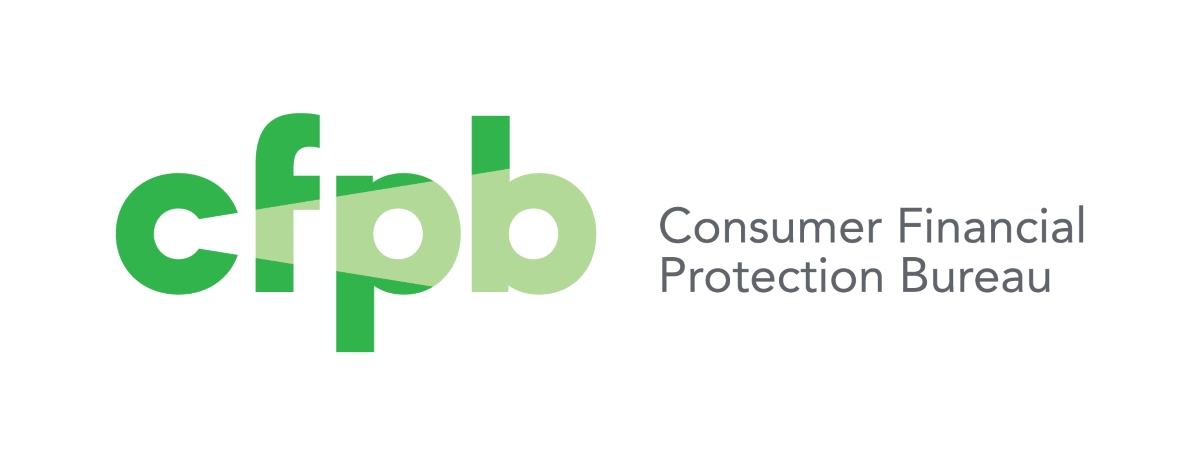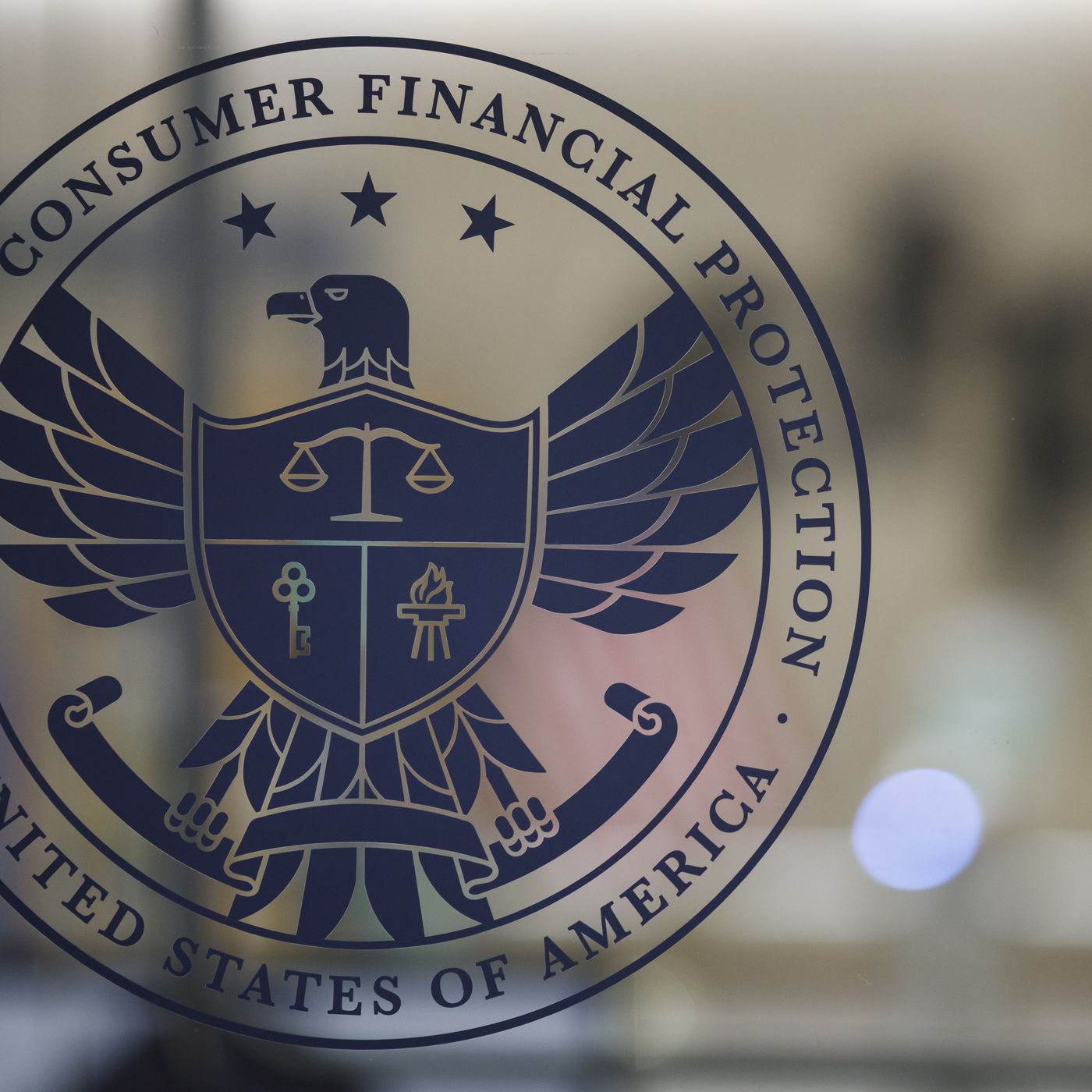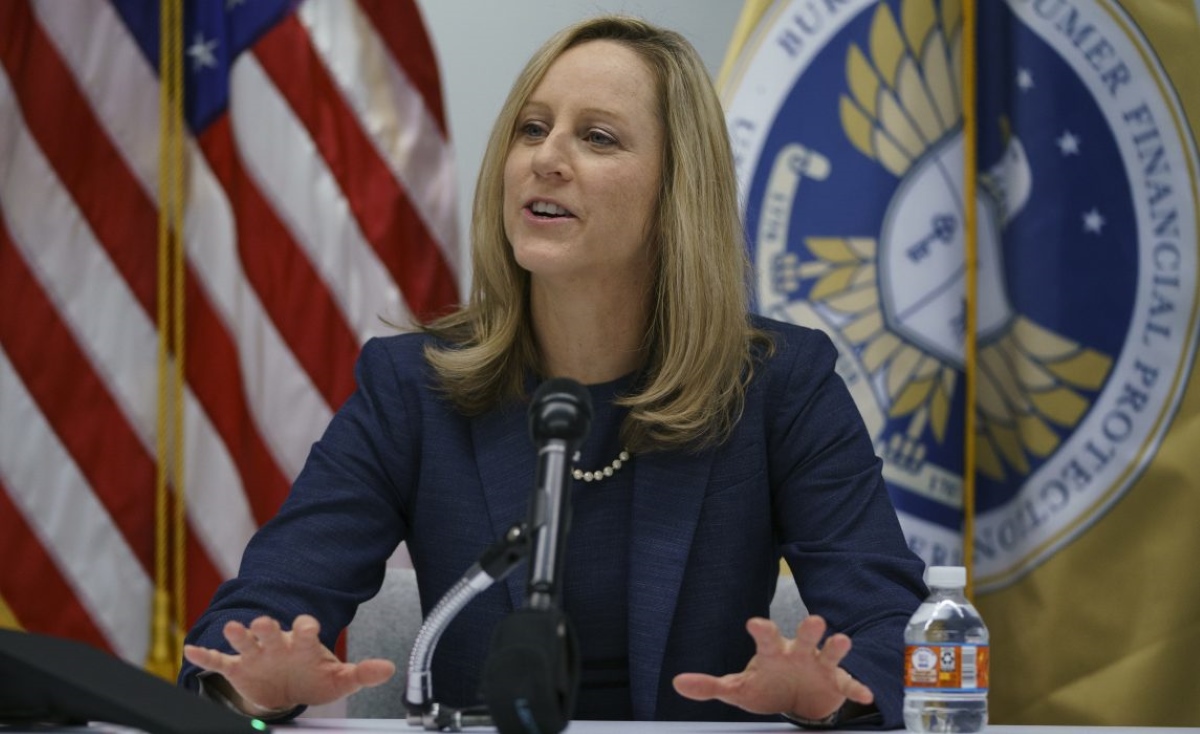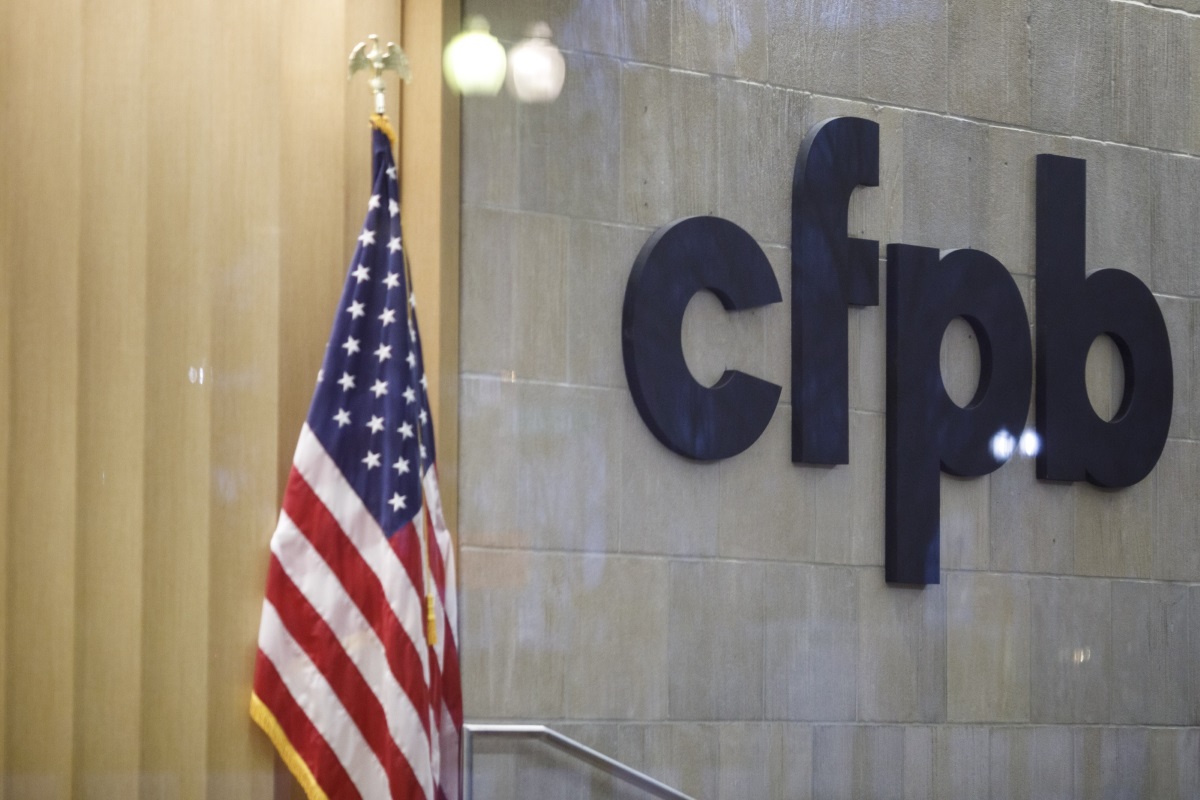Home>Finance>What Are The Roles Of The Federal Trade Commission And The Consumer Financial Protection Bureau?
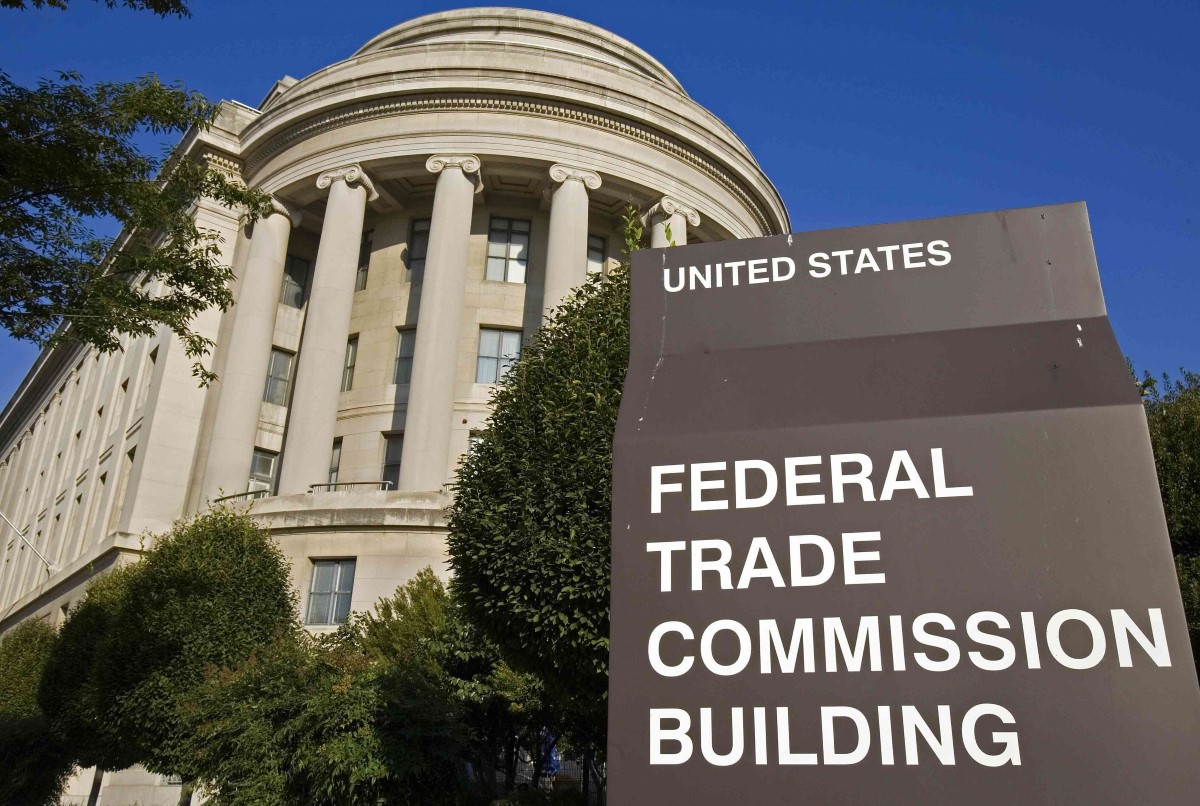

Finance
What Are The Roles Of The Federal Trade Commission And The Consumer Financial Protection Bureau?
Modified: March 1, 2024
Learn about the important roles of the Federal Trade Commission and the Consumer Financial Protection Bureau in safeguarding consumer rights and ensuring fair practices in the finance industry.
(Many of the links in this article redirect to a specific reviewed product. Your purchase of these products through affiliate links helps to generate commission for LiveWell, at no extra cost. Learn more)
Table of Contents
- Introduction
- Overview of the Federal Trade Commission (FTC)
- Role and Responsibilities of the FTC
- Key Functions of the FTC
- Overview of the Consumer Financial Protection Bureau (CFPB)
- Role and Responsibilities of the Consumer Financial Protection Bureau (CFPB)
- Key Functions of the Consumer Financial Protection Bureau (CFPB)
- Comparison of the Federal Trade Commission (FTC) and the Consumer Financial Protection Bureau (CFPB)
- Collaboration and Cooperation between the Federal Trade Commission (FTC) and the Consumer Financial Protection Bureau (CFPB)
- Conclusion
Introduction
When it comes to protecting consumers in the financial marketplace, two key organizations play a vital role – the Federal Trade Commission (FTC) and the Consumer Financial Protection Bureau (CFPB). Both agencies have a shared responsibility of safeguarding consumers’ interests, but their specific roles and functions differ to some extent.
In this article, we will delve into the roles and responsibilities of the FTC and CFPB, exploring how they work to protect consumers and ensure fair practices in the financial industry.
The FTC, established in 1914, is an independent agency of the United States government. Its mission is to maintain a fair and competitive marketplace while protecting consumers from unfair and deceptive trade practices.
The CFPB, on the other hand, is a relatively newer agency, founded in 2011 under the Dodd-Frank Wall Street Reform and Consumer Protection Act. Its primary focus is on regulating financial products and services to ensure that consumers are treated fairly and have access to transparent information.
While both agencies work towards consumer protection, they have distinct areas of focus and utilize different strategies to achieve their objectives.
In the following sections, we will take a closer look at the roles, responsibilities, and key functions of both the FTC and the CFPB. Through this exploration, we will gain a better understanding of how these agencies contribute to the well-being of consumers in the financial marketplace.
Overview of the Federal Trade Commission (FTC)
The Federal Trade Commission (FTC) is a regulatory agency of the United States government that aims to protect consumers and promote competition in the marketplace. It operates as an independent agency, working to prevent deceptive and unfair trade practices that may harm consumers or undermine fair competition.
The FTC’s primary objective is to ensure that businesses adhere to fair and ethical practices, offering transparency and protection to consumers across a wide range of industries, including finance, advertising, telecommunications, and more.
As one of the oldest consumer protection agencies, the FTC has a long history of protecting consumers’ rights. In its early years, it primarily focused on regulating anticompetitive behavior, but over time, its role has expanded to encompass addressing deceptive and unfair practices that pose a risk to consumers’ financial well-being.
The FTC is composed of five commissioners, each appointed by the President and confirmed by the Senate. These commissioners steer the agency’s policies, enforcement actions, and initiatives.
The FTC employs various strategies to enforce consumer protection laws. It investigates complaints from consumers, conducts industry-specific research, files lawsuits against businesses that violate consumer protection laws, and educates consumers about their rights and how to avoid scams and frauds.
Moreover, the FTC collaborates with international partners to combat cross-border scams and fraudulent activities that may impact consumers globally. This cooperation helps in addressing emerging challenges in the digital age, where technology enables scammers to reach victims across national borders.
The primary goal of the FTC is to promote fair competition, which ultimately benefits consumers. By preventing deceptive advertising, unfair business practices, and anticompetitive behavior, the FTC ensures that consumers have access to accurate information, competitive pricing, and a wide array of choices in the marketplace.
In the next section, we will explore the specific role and responsibilities of the FTC in more detail.
Role and Responsibilities of the FTC
The Federal Trade Commission (FTC) has a wide range of responsibilities that aim to protect consumers and maintain a fair and competitive marketplace. Its role can be summarized as follows:
- Enforcement of Consumer Protection Laws: One of the primary responsibilities of the FTC is to enforce federal consumer protection laws. It takes action against businesses and individuals engaged in deceptive or unfair practices that harm consumers. The agency investigates complaints, monitors industry practices, and takes legal action to stop fraudulent activities.
- Prevention of Deceptive Advertising: The FTC works diligently to ensure that consumers are not misled by false or deceptive advertising. It monitors and takes action against businesses that make false claims, engage in bait-and-switch tactics, or use misleading pricing information. Through its efforts, the FTC promotes truthful and accurate advertising, giving consumers the information they need to make informed decisions.
- Protection of Consumer Privacy and Data Security: As technology advances, the FTC also plays a crucial role in protecting consumer privacy and data security. It enforces laws related to data breaches, online privacy, and identity theft prevention. The agency works to ensure that businesses handle consumers’ personal information responsibly and take appropriate measures to safeguard it.
- Regulation of Business Practices: The FTC regulates various business practices to ensure fair competition in the marketplace. It prohibits anticompetitive actions, such as price fixing and monopolistic behavior, and takes action against mergers and acquisitions that may harm competition. By promoting fair business practices, the FTC creates an environment that benefits both consumers and businesses.
- Consumer Education and Advocacy: In addition to its enforcement actions, the FTC focuses on educating and empowering consumers. The agency provides resources, guides, and alerts to help consumers understand their rights and navigate the complexities of the marketplace. It also advocates for consumer protection policies at the federal level, working to shape regulations that benefit consumers nationwide.
Through these roles and responsibilities, the FTC acts as a watchdog, continuously working to protect consumers from deceptive practices, ensure fair competition, and maintain trust in the marketplace. Its efforts contribute to a level playing field where businesses can thrive while consumers can make informed decisions and have confidence in the products and services they choose.
In the next section, we will explore the key functions of the FTC in more detail, shedding light on how the agency fulfills its role and responsibilities.
Key Functions of the FTC
The Federal Trade Commission (FTC) carries out several key functions to fulfill its role in protecting consumers and maintaining fair competition in the marketplace. These functions encompass a wide range of activities aimed at ensuring consumer welfare and promoting a level playing field for businesses. The key functions of the FTC include:
- Investigation of Consumer Complaints: The FTC receives and investigates thousands of consumer complaints each year. These complaints cover a wide range of issues, such as deceptive advertising, identity theft, fraud, and unfair business practices. By investigating these complaints, the FTC identifies patterns of misconduct, takes enforcement actions, and provides remedies for affected consumers.
- Enforcement Actions: The FTC has the authority to take legal action against businesses and individuals that engage in deceptive or unfair practices. This can include filing lawsuits, obtaining monetary penalties, and issuing cease and desist orders. The agency actively monitors industries, conducts investigations, and initiates enforcement actions to protect consumers and deter unlawful conduct.
- Consumer and Business Education: The FTC is committed to educating both consumers and businesses about their rights and responsibilities. Through its website, publications, and outreach programs, the agency provides valuable resources and information to help consumers make informed decisions and avoid scams. It also guides businesses on how to comply with consumer protection laws and maintain fair business practices.
- Policy Development and Advocacy: The FTC plays a significant role in shaping consumer protection policies at the federal level. It conducts research and collects data to inform policy decisions. The agency also advocates for legislative and regulatory changes that enhance consumer rights and promote fair competition. By engaging with policymakers, industry stakeholders, and consumer advocates, the FTC advocates for regulations that benefit consumers and promote marketplace integrity.
- International Cooperation: Given the global nature of many consumer protection issues, the FTC actively engages in international cooperation. The agency collaborates with foreign counterparts to combat cross-border scams, share best practices, and coordinate enforcement efforts. This collaboration strengthens the agency’s ability to protect consumers in an increasingly interconnected world.
By carrying out these key functions, the FTC acts as a crucial guardian of consumer rights and market fairness. It works diligently to investigate consumer complaints, enforce the law, educate the public, shape policies, and foster cooperation both domestically and internationally. Through its efforts, the FTC cultivates consumer trust, promotes economic competition, and safeguards the interests of individuals in the marketplace.
In the next sections, we will explore the role and responsibilities of another important agency in consumer finance protection – the Consumer Financial Protection Bureau (CFPB).
Overview of the Consumer Financial Protection Bureau (CFPB)
The Consumer Financial Protection Bureau (CFPB) is a regulatory agency established under the Dodd-Frank Wall Street Reform and Consumer Protection Act in 2011. The CFPB’s primary mission is to protect consumers in the financial marketplace and ensure that they are treated fairly by financial institutions.
With its creation, the CFPB became the first agency solely dedicated to the protection of consumers in the realm of financial services. It is an independent agency that operates under the oversight of the Federal Reserve.
The CFPB supervises a wide array of financial institutions, including banks, credit card companies, mortgage lenders, payday lenders, student loan servicers, and debt collectors. Its mandate covers various aspects of consumer finance, such as mortgages, credit cards, payday loans, student loans, and more.
One of the primary goals of the CFPB is to promote transparency and accountability in the financial industry. It strives to ensure that consumers have access to clear and understandable information about the financial products and services they use. By monitoring and regulating financial institutions, the CFPB aims to prevent predatory practices and ensure fair treatment for consumers.
The CFPB also plays a crucial role in enforcing consumer protection laws. It has the authority to take legal action against financial institutions that engage in deceptive or abusive practices. It works to ensure that companies comply with regulations related to fair lending, consumer disclosures, debt collection, and more.
Besides its enforcement and regulatory functions, the CFPB focuses on consumer education and financial literacy. Through its website, educational materials, and outreach programs, it provides consumers with resources and information to make informed financial decisions. The agency also works to address disparities and promote equal access to financial services, particularly in underserved communities.
The CFPB operates with a consumer-centric approach, seeking input from consumers, advocates, and industry stakeholders when developing policies and regulations. It also actively engages in research and data analysis to identify emerging trends and risks in the financial marketplace, allowing it to address potential consumer harm proactively.
Overall, the CFPB serves as a dedicated guardian of consumer rights in the financial sector, working to ensure that consumers are protected from unfair and deceptive practices and have access to transparent and responsible financial products and services.
In the following sections, we will dive deeper into the specific role, responsibilities, and key functions of the Consumer Financial Protection Bureau.
Role and Responsibilities of the Consumer Financial Protection Bureau (CFPB)
The Consumer Financial Protection Bureau (CFPB) is tasked with the primary goal of protecting consumers in the financial marketplace. To achieve this objective, the CFPB has the following roles and responsibilities:
- Enforcement of Consumer Financial Laws: The CFPB is responsible for enforcing a wide range of federal consumer financial protection laws. It investigates complaints and reports of unfair, deceptive, or abusive practices by financial institutions. When violations are identified, the CFPB takes appropriate enforcement actions, including fines, penalties, and legal remedies, to hold institutions accountable and provide relief to affected consumers.
- Supervision and Regulation: The CFPB has the authority to supervise and regulate financial institutions to ensure compliance with consumer financial protection laws. It supervises banks, credit unions, mortgage lenders, payday lenders, and other financial service providers to identify and rectify potential consumer harm. Through its supervision, the CFPB aims to prevent systemic risks, promote fair treatment of consumers, and oversee the implementation of consumer-friendly practices.
- Consumer Complaint Handling: The CFPB operates a robust consumer complaint system, allowing individuals to submit complaints regarding financial products and services. It reviews and analyzes these complaints to identify trends, patterns, and potential risks to consumers. By addressing individual complaints and analyzing data, the CFPB gains insights into problematic practices and takes appropriate actions to rectify them.
- Rulemaking and Guidance: The CFPB has the authority to develop rules and regulations that protect consumer interests in the financial marketplace. Through its rulemaking process, the CFPB establishes standards for financial institutions and issues guidance to clarify legal requirements. These rules and guidance aim to promote fair practices, transparent disclosures, and consumer-friendly policies.
- Financial Education and Empowerment: The CFPB is committed to educating and empowering consumers to make informed financial decisions. It provides resources, tools, and educational materials that cover various financial topics, including managing debt, understanding credit scores, and navigating the mortgage process. By equipping consumers with knowledge, the CFPB aims to improve financial literacy and empower individuals to protect their financial well-being.
It is important to note that the CFPB focuses primarily on consumer finance and does not supervise or regulate every aspect of the financial industry. Rather, it concentrates its efforts on ensuring fair treatment, transparency, and accountability in areas such as mortgages, credit cards, payday lending, student loans, and debt collection.
By carrying out these roles and responsibilities, the CFPB plays a vital role in safeguarding consumers’ interests in the financial marketplace. It works to ensure that consumers have access to fair and transparent financial products and services, while also holding financial institutions accountable for their actions.
In the next section, we will explore the key functions of the CFPB in more detail, shedding light on how the agency fulfills its roles and responsibilities.
Key Functions of the Consumer Financial Protection Bureau (CFPB)
The Consumer Financial Protection Bureau (CFPB) carries out several key functions to fulfill its role in protecting consumers in the financial marketplace. These functions encompass a wide range of activities aimed at ensuring fair treatment and transparency in consumer finance. The key functions of the CFPB include:
- Consumer Complaint Handling: One of the primary functions of the CFPB is to handle consumer complaints regarding financial products and services. Through its complaint database, the CFPB collects, reviews, and analyzes complaints from consumers across various financial sectors. This data helps the CFPB identify patterns of misconduct and take appropriate actions to address issues and improve consumer experiences.
- Supervision and Examination: The CFPB is responsible for supervising and examining financial institutions to ensure compliance with consumer financial protection laws. This includes banks, credit unions, mortgage lenders, payday lenders, and more. The CFPB conducts examinations to assess whether these entities are operating in a fair and transparent manner, treating consumers appropriately, and complying with regulations.
- Enforcement Actions: The CFPB has the authority to take enforcement actions against financial institutions that violate consumer protection laws. This can include imposing fines, penalties, and other legal remedies to hold entities accountable. Through its enforcement actions, the CFPB aims to deter unlawful practices, provide restitution to affected consumers, and ensure that financial institutions operate ethically and responsibly.
- Rulemaking and Regulation: The CFPB has the power to develop and implement rules and regulations that promote consumer protection in the financial industry. This involves extensive research, analysis of market practices, and stakeholder engagement. By establishing clear rules, the CFPB aims to enhance consumer rights, promote transparency, and prevent unfair practices in areas such as mortgages, credit cards, debt collection, and more.
- Financial Education and Outreach: The CFPB is dedicated to improving financial literacy and empowering consumers to make informed decisions. The agency provides educational resources, tools, and guidance on various financial topics, helping individuals understand complex concepts and navigate the financial landscape. Through its outreach programs, the CFPB reaches diverse communities, aiming to address disparities in financial access and provide targeted assistance to underserved populations.
Through these key functions, the CFPB works to promote fair practices, transparency, and accountability in the consumer finance industry. By handling complaints, supervising financial institutions, taking enforcement actions, implementing regulations, and empowering consumers through education, the CFPB strives to level the playing field and ensure that consumers are protected from unfair and deceptive practices.
In the next section, we will compare the roles and functions of the FTC and the CFPB, exploring their collaborative efforts to protect consumers.
Comparison of the Federal Trade Commission (FTC) and the Consumer Financial Protection Bureau (CFPB)
The Federal Trade Commission (FTC) and the Consumer Financial Protection Bureau (CFPB) both play crucial roles in protecting consumers and ensuring fair practices in the marketplace. While their missions overlap in certain areas, there are distinct differences between the two agencies in terms of focus, authority, and scope. Let’s compare the FTC and CFPB:
- Focus: The FTC has a broad focus on consumer protection across multiple industries, including finance, advertising, and telecommunications. It aims to prevent deceptive trade practices and maintain a competitive marketplace. On the other hand, the CFPB has a specific focus on consumer finance. It works to ensure consumers are treated fairly by financial institutions in areas such as mortgages, credit cards, and loans.
- Authority: The FTC is an independent agency with broad authority to enforce consumer protection laws and regulate unfair business practices across various industries. It can take enforcement actions, conduct investigations, and issue regulations. The CFPB, also an independent agency, has specific authority over consumer finance and has the power to supervise and regulate financial institutions, enforce financial protection laws, and issue rules specific to the consumer finance industry.
- Scope: While the FTC addresses consumer protection across multiple industries, the CFPB focuses exclusively on financial products and services. The CFPB oversees a range of financial institutions, including banks, credit unions, mortgage lenders, and debt collectors, while the FTC’s oversight includes a broader spectrum of businesses.
- Enforcement Actions: Both the FTC and CFPB have the authority to take enforcement actions against businesses that violate consumer protection laws. However, the FTC’s enforcement actions cover a wider range of industries, while the CFPB’s enforcement actions primarily focus on the consumer finance sector.
- Rulemaking: The FTC and CFPB have the power to issue rules and regulations to protect consumers. However, the CFPB has broader rulemaking authority specifically tailored to the consumer finance industry, enabling it to establish regulations and standards for financial institutions operating in this sector.
- Consumer Complaints: Both agencies handle consumer complaints, but in different capacities. The FTC accepts consumer complaints across various industries and uses them to identify patterns of misconduct and initiate investigations. The CFPB, on the other hand, has a specific consumer complaint database focused on financial products and services, providing consumers with a platform to register their concerns and enabling the agency to track issues related to consumer finance.
While the FTC and CFPB have distinct roles and responsibilities, they often collaborate and share information to better protect consumers. The agencies work together on cases that involve overlapping jurisdiction, sharing resources, expertise, and data to address consumer protection issues effectively.
Ultimately, the FTC and CFPB complement each other in their efforts to safeguard consumers and maintain fair practices in the marketplace. The FTC’s broad scope allows it to address deceptive trade practices across industries, while the CFPB’s specialized focus ensures that consumers are protected in the complex realm of consumer finance.
In the next section, we will explore the collaboration and cooperation between the FTC and CFPB, highlighting how these two agencies work together to achieve their shared objectives.
Collaboration and Cooperation between the Federal Trade Commission (FTC) and the Consumer Financial Protection Bureau (CFPB)
The FTC and CFPB recognize the importance of collaboration and cooperation in fulfilling their respective missions to protect consumers and maintain fair practices in the marketplace. Despite their different areas of focus, these two agencies work together on various fronts to combine resources, share information, and maximize their efforts. The collaboration and cooperation between the FTC and CFPB can be seen in the following ways:
- Sharing of Resources and Expertise: The FTC and CFPB collaborate by sharing resources and expertise to effectively address consumer protection issues. They exchange information, research findings, and best practices to enhance their understanding of evolving market trends, emerging risks, and deceptive practices. By leveraging each other’s expertise, the agencies are better equipped to protect consumers in their respective domains.
- Coordination on Overlapping Jurisdiction: The FTC and CFPB work together to coordinate their efforts in cases where their jurisdictions overlap. This is particularly relevant when addressing issues that straddle both consumer protection and consumer finance realms. The agencies share information and coordinate investigations to ensure a comprehensive approach in protecting consumers’ rights and interests.
- Data Sharing and Analysis: Both agencies rely on data and analysis to identify patterns of misconduct and detect emerging risks. They exchange data and collaborate on research projects to gain deeper insights into industry practices and consumer experiences. This collaboration enhances their ability to make informed policy decisions and prioritize enforcement actions.
- Training and Education Initiatives: The FTC and CFPB collaborate on training and education initiatives to enhance consumer awareness and industry compliance. They conduct joint workshops, seminars, and webinars to educate businesses, consumers, and stakeholders on important issues related to consumer protection and consumer finance. By pooling their resources, the agencies can reach a broader audience and make a more significant impact in promoting fair practices.
- Policy Coordination and Advocacy: The FTC and CFPB coordinate their policy efforts to advocate for consumer protection. They work together to shape legislation, regulations, and industry standards. By aligning their policy positions and advocating in a united voice, the agencies amplify their influence and promote policies that prioritize consumer welfare and fair competition.
The collaboration and cooperation between the FTC and CFPB recognize the interconnected nature of consumer protection and consumer finance issues. By combining efforts, resources, and expertise, these agencies enhance their ability to address emerging challenges, adapt to evolving practices, and stay ahead of fraudulent or deceptive activities.
Through their collaboration, the FTC and CFPB illustrate the importance of a coordinated approach in safeguarding consumers’ interests, maintaining market integrity, and fostering a fair and transparent marketplace.
In the concluding section, we will summarize the key points discussed and emphasize the significance of the FTC and CFPB in protecting consumers in the financial marketplace.
Conclusion
The Federal Trade Commission (FTC) and the Consumer Financial Protection Bureau (CFPB) are essential agencies dedicated to protecting consumers and ensuring fair practices in the financial marketplace. While their roles, focuses, and authorities differ, both agencies play vital roles in safeguarding consumers and promoting transparency in their respective domains.
The FTC has a broad focus on consumer protection across multiple industries, working to prevent deceptive trade practices and maintain a competitive marketplace. On the other hand, the CFPB specifically focuses on consumer finance, aiming to ensure fair treatment by financial institutions in areas like mortgages, credit cards, and loans.
The FTC and CFPB collaborate and cooperate in various ways, including sharing resources, coordinating on overlapping jurisdiction, exchanging data, and conducting joint training and education initiatives. By pooling their expertise and leveraging their strengths, they enhance their effectiveness in protecting consumers from unfair practices and deceptive behavior.
Through their enforcement actions, rulemaking, and advocacy efforts, both agencies strive to hold businesses accountable and provide relief to affected consumers. They work to ensure that consumers have access to clear information, fair treatment, and redress when they encounter deceptive or abusive practices.
As the financial landscape continuously evolves, the roles and responsibilities of the FTC and CFPB are increasingly important. They adapt to emerging challenges, employ innovative strategies, and collaborate to tackle the complexities of the digital marketplace, protecting consumers from fraud, scams, and discriminatory practices.
By maintaining a robust consumer complaint system, supervising financial institutions, educating consumers, and actively advocating for consumer rights, the FTC and CFPB contribute to a more transparent and equitable financial marketplace.
In conclusion, the FTC and CFPB are integral players in safeguarding consumers’ interests, ensuring fair practices, and promoting a level playing field in the financial industry. Their collaboration and collective efforts are essential in upholding consumer rights, maintaining market integrity, and empowering individuals to make informed financial decisions.
As these agencies continue to adapt and evolve, their commitment to consumer protection remains steadfast, and they hold a critical role in building consumer trust and fostering a fair and competitive financial marketplace.
